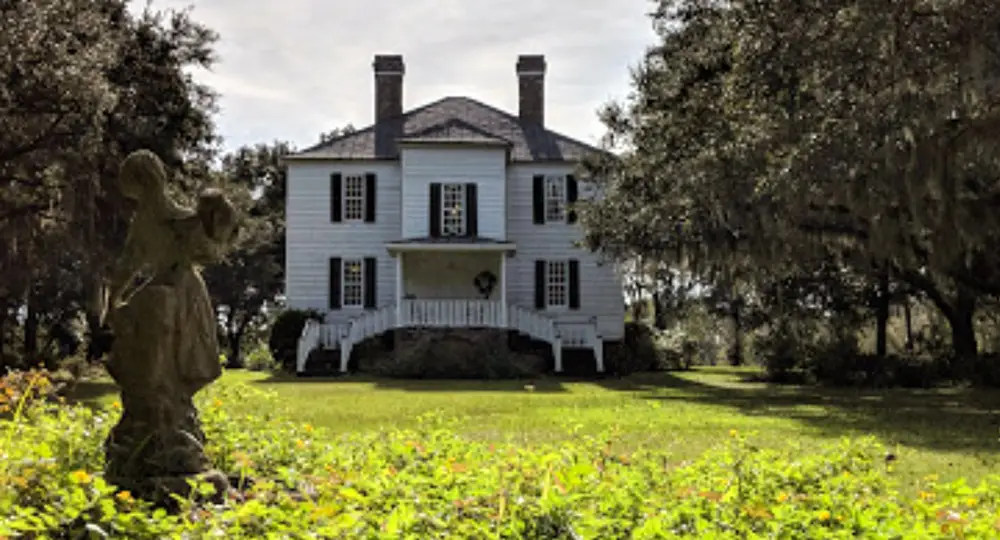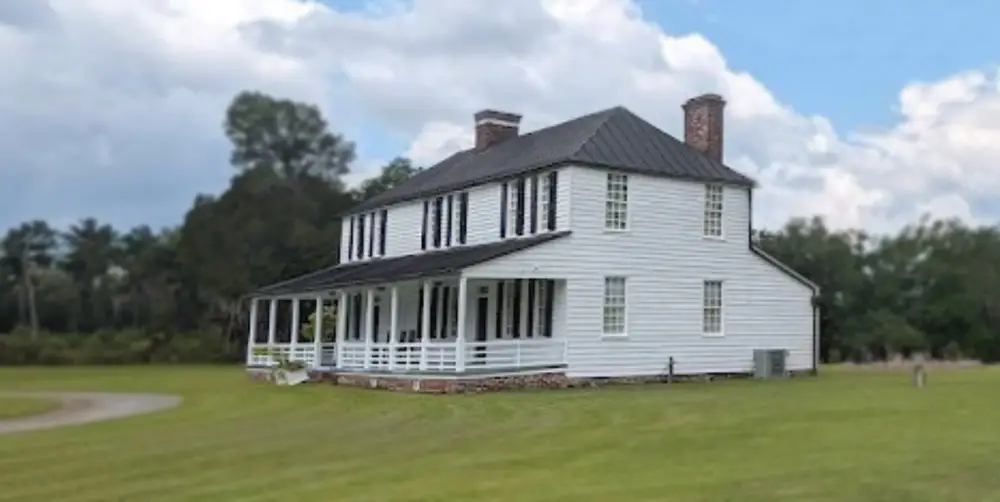Which Plantation Should I Visit?
From the expansive 738-acre Boone Hall Plantation in Mt. Pleasant to the relatively small 37-acre McLeod Plantation in Charleston, restored and preserved plantations abound in the Lowcountry.
The mid 17th Century saw the birth of plantations in the Lowcountry and by the 1850s they became widespread. Some plantation owners became spectacularly wealthy, which is witnessed by the grandeur of the owners’ residences. With the end of the Civil War and the end of slavery, plantations fell into ruin and those magnificent residences and the properties on which they sat evolved into places of leisure, into gated developments of upscale housing, and into tourist attractions that showcased the architecture, landscaping, and history of the Lowcountry.
Wealthy businessmen purchased old plantations and redesigned the edifices, transforming plantations into hunting clubs and lodges for sportsmen. Also, local and state agencies purchased or ‘took over’ plantations that had fallen into decline and restored the decaying architecture, revitalizing the area and bringing economic reconstruction, thus turning what was outright evil (i.e. slavery) into something respectable, functional, and profitable for all of the Lowcountry residents and tourists.
Attention is often drawn to preserved slave quarters and information about slavery is underscored because, as writer and philosopher George Santayana said,
Those who cannot remember the past are condemned to repeat it.

There are almost 100 Plantations listed in South Carolina on the National Register of Historic Places and those listed as National Historic Landmarks. The local plantations of Charleston and surrounding areas are spectacular and certainly worth visiting.
Boone Hall Plantation

A visit to Boone Hall Plantation, which dates back to 1734, is said to be “like opening a time capsule from the early to mid-nineteenth century”. With its Colonial Revival style architecture and 200-year old live oak trees, preserved wetlands, creeks, and ponds to the lovely formal gardens with brick-paved paths and hand-thrown brick dwellings on the notorious “slave street”, Boone Hall has it all. The most memorable feature of the grounds is the grand ‘Avenue of Oaks’ that consists of 88 live oak trees and one magnolia that are evenly spaced running for 3/4 of a mile from the entrance of the plantation to the brick gateposts that imposingly stand at the entry to the enclosure of the forecourt of the house. There even is a Gullah Theater presentation available by performers in historical garb.
Drayton Hall

Drayton Hall, built in 1742, is considered an historical masterpiece and is a favorite in the Charleston area. It is the nation's oldest preserved plantation house in America that is still open to the public. It is the finest example of Georgian-Palladian architecture in the United States. During the Civil War, the house itself was spared from the invading Union Army because the family hung signs on the edge of the property saying the house was being used as a makeshift Smallpox Hospital. It was the only house on the Ashley River to be saved from destruction.
The historical impact of Drayton Hall, the house that sits on 630 acres of manicured lawns, ancient oak trees draped with Spanish Moss bordering the scenic Ashley River that meanders through time itself, will be etched in your memory forever.
Drayton Hall remained in the Drayton family for seven generations. It has been left unfurnished to showcase the original moldings, ornate hand-carved woodwork, and other magnificent architectural features. It has never been wired for electricity or had plumbing, heating or air conditioning installed in order to preserve its original interiors.
Tourists can view the decorative and fine arts displayed as well as the collection of historical artifacts that tell the Drayton Hall story from its founding to the present day. They ‘speak’ of the estate’s beginnings, the reality of a privileged class, the experiences of plantation life and even of the encroaching war. The African-American Cemetery is still in its original state, revealing the burial site of the many slaves who lived, worked and died at the Drayton Hall Plantation.
Middleton Place Plantation

Middleton Place Plantation in Charleston, SC began in 1741. This National Historic Landmark is home to America’s oldest landscaped gardens. The Plantation today is comprised of 110 acres including the Gardens, House Museum, Stable Yards, and Eliza’s House. Like other plantations, the structures and landscape tell the unique history of all who lived, worked, and died there.
The Middleton family includes two of the American Founding Fathers. In fact, Arthur Middleton was one of the signers of the Declaration of Independence. The Middleton family owned 25 plantations in South Carolina that produced mainly rice, but also timber and its byproducts of pitch, turpentine, and tar. They also made blue dye out of indigo and raised cattle. To do all this, they owned 3500 slaves, whose generations are interwoven throughout the history of the property.
In 1970, the stable area was reconstructed for visitors to tour. These buildings include a horse barn, blacksmith's shop, sheds, garage, and servant quarters. In 1974, The Middleton Place Foundation was established; and, the following year, Middleton Place became a living museum operated by the newly-formed Foundation.
For almost two hundred years, rice was the dominate crop of the Lowcountry and fueled its economy. At Middleton Place the expertise of enslaved African Americans in the production of Carolina Gold will be uncovered as you learn how it influenced almost every aspect of life up to the early 20th century.
On a different, more colorful note, in 1999, the Britisher’s bail scene for the movie “The Patriot” was shot at Middleton Place.
Magnolia Plantation & Gardens

Magnolia Plantation & Gardens, Charleston’s most visited plantation, was selected as one of "America's Most Beautiful Gardens" by Travel + Leisure magazine. The historic house with gardens is located on 464 acres on the Ashley River. It is the oldest public tourist site in the Lowcountry and the oldest public gardens in America, holding the distinction of being listed on the National Register of Historic Places.
Magnolia Plantation was founded in 1676 by the Drayton family (of Drayton Hall fame). It has been a witness to our nation’s history from the American Revolution through the Civil War to present day. It opened its famous gardens to visitors in 1870 for the public to view the thousands of magnificent flowers and plants and to experience its beauty and discover its rich history. William Posey Silva, a Charleston Renaissance artist, referred to Magnolia Gardens as "The Garden of Dreams". Original paintings by Silva hang in the main House.
Magnolia Gardens has been described as “America’s last large-scale Romantic-style Garden” because unlike most of America’s formal gardens, which control nature with impeccable designs created by talented landscape architects, Magnolia lets nature itself create a restful, soothing atmosphere, where nature and man live in harmony. It has beautiful gardens, ponds, trees covered with Spanish Moss, lovely views of the Ashley River and a delightful petting zoo.
McLeod Plantation

McLeod Plantation, established in 1851 on 37 acres on James Island, is considered an important Gullah/Geechee heritage site that has been carefully preserved in recognition of its cultural and historic worth. It also held a strategically important role during the Civil War.
McLeod Plantation is a living tribute to the enslaved men and women who built the riches of sea island cotton, whose work and culture are entrenched in the Lowcountry’s very beginnings. Voices from the past are heard through the stories of black and white, enslaved and free, whose lives shaped Charleston’s future, but were nearly erased from history. At McLeod Plantation, you can explore the daily lives and relationships of those who worked there before and after the Civil War.
The McLeod Plantation has served over the years as a Confederacy Hospital, a burial ground for slaves and Union soldiers, and the headquarters for the Freedmen's Bureau. The property includes a riverside outdoor pavilion, a fantastic oak allèe and the McLeod Oak, which many believe is more than 600 years old. It also includes the slave cabins, a detached kitchen, a gin house, a barn, a carriage house, and maintained gardens.
Hopsewee Plantation

Hopsewee Plantation located in Georgetown, SC is known as the Thomas Lynch, Jr. birthplace or Hopsewee-on-the-Santee. Thomas Lynch Jr. was one of the signers of the Declaration of Independence. The Plantation house was built in 1735 on the North Santee River and the property served as a rice plantation. It is now a private residence and a National Historic Landmark.
The house was never modified from its original design and is furnished with 18th and 19th century antiques. There are two original slave cabins on the property. You can explore the architectural features of the house from Attic to Cellar and learn the history of the Patriots and Planters who lived there as well as the history of traditional sweetgrass basket-weaving in a hands-on workshop. Then you can have lunch in The River Oak Cottage Tearoom, which serves the Lowcountry favorites of Shrimp and Grits, Pulled Pork, Soups and Sandwiches and the Southern Tea service, which replicates a British Afternoon Tea.
Hopsewee-on-the-Santee allows you to plan your special event to be held there on the beautiful wooded grounds along the River, which makes a picture-perfect backdrop for a private event.
Ashley Hall Plantation
Listed on the National Register of Historic Places in 1975, Ashley Hall Plantation was a historic plantation complex established in the early 1670s by Stephen Bull. Bull and his descendants (including William Bull and William Bull, Jr.) who lived on the plantation were prominent in government, science, engineering, agriculture, and military affairs. The Bull family lived at Ashley Hall until 1865 when the main house was burned to prevent its destruction by Union forces during the Civil War.
A plantation complex was generally a self-sufficient settlement with everything needed to operate a successful agricultural business including a main residence, residences for enslaved laborers and pens for livestock.
As one of the earliest settlements on the Ashley River in the section of Charleston known as West Ashley, it includes a small tabby-walled house with a 20th century second story addition and is considered one of the oldest standing houses in the state. A historic Indian mound as well as many Native American artifacts have been found on the plantation’s property as well.
The Ashley Hall Plantation complex also includes the ruins of the original Georgian plantation house, a monument to William Bull the second Governor of South Carolina, two prehistoric Indian archaeological sites and two 18th century well sites associated with the plantation. The grounds have open spaces, woods, and shrubs that remain as they were originally, with a clear view of the Ashley River and the city of Charleston in the distance. An Italian style garden extends from the house to the riverbank.
Middleburg Plantation

Do you want to own a National Historic Landmark? Middleburg Plantation is currently up for sale! It sits on about 400 acres of lowlands bordering the Cooper River near the town of Huger. The main house is a colonial era two-story timber-frame building with a hip roof built in 1697 by Benjamin Simons, a French Huguenot planter who fled from France after free worship was prohibited there. Today, it is probably the oldest standing wood-frame building in South Carolina. As an architecturally important example of period construction, it was declared a National Historic Landmark in 1970. The plantation also has a two-bedroom kitchen building, two-bedroom butler building, and a two-story brick and frame carriage house known as the Commissary Building. The carriage house has fine jig-sawn woodwork, and served as a slave jail in its rear portion
A magnificent oak avenue leads to the main house, which is a fully restored plantation home. In its day, it was one of the most successful and profitable rice plantations in the Lowcountry that consisted of over 5000 acres. Today, the 400 acres that are left are a haven for hunters, having plentiful wildlife including duck, deer, dove, quail, and turkey.
Paul Hamilton House

The Paul Hamilton House that burned in 1929 is the ruin of a 1725 plantation house located on Edisto Island. The Brick House Ruins, as it is commonly called, was designated a National Historic Landmark in 1970 due to the French Huguenot architecture of the surviving walls.
The two-story plantation house is situated on 300 acres, constructed in the Province of South Carolina for Paul Hamilton, a wealthy South Carolina planter. The brick he used was imported from Boston in about 1725 because it was harder and denser than the local brick. The interior was made from local aged lumber. The 1929 fire consumed only the wooden portion, leaving the brick and stucco as an important artifact showing the early French architectural influence in South Carolina history.
Ranked No.8 on TripAdvisor among 8 attractions in Edisto Island
Crawford's Plantation House
For those interested in the local architecture of the Lowcountry, Crawford's Plantation House on Edisto Island is unique. The plantation is associated with several families prominent in the economic and social history of Edisto Island. The house is a two-and-one-half story, weatherboard clad, frame residence built between 1835-1840. The design shows the influence of the Greek Revival style on Lowcountry architecture. It is noteworthy for its T-plan, nineteenth century detail. One-story polygonal projections were added at the front between 1889 and 1899. This plantation was listed in the National Register on June 8, 1993.
The Grove Plantation
The place known today as the Grove Plantation was a land grant to Robert Fenwick in 1694. In 1825. It was purchased by George Washington Morris who gave it the name Grove Plantation. The Grove plantation house was built around 1828 in the late-Federal-period plantation style with the unique feature of polygonal rooms and projecting symmetrical polygonal bays. It is one of only a few antebellum mansions in the ACE Basin area to survive the Civil War. New title holders owned the adjacent plantation, Pinebury, and combined the plantations into one large property.

During the Civil War, both Pinebury and the Grove were sites of military activity resulting in the family relocating to Spartanburg. After the War, the property eventually reverted back to Morris, the original owner. After that, the property changed hands many times, with each owner doing various renovations to the property. And in 1978, to ensure the Grove Plantation would be preserved, it was placed on the National Register of Historical Places. In 1991, The Nature Conservancy purchased it and a year later, The United States Fish and Wildlife Service acquired it and designated it as the ACE Basin National Wildlife Refuge. Today, The Grove Plantation houses the offices of the US Fish and Wildlife Services ACE Basin National Wildlife Refuge. (The ACE Basin watershed is one of the largest areas of undeveloped wetlands ecosystems remaining on the Atlantic Coast.)
If you would like to learn more about Charleston's history while enjoying the cool ocean breeze, and kicking back with your favorite refreshment, then contact Captain Dave and book a tour today!
